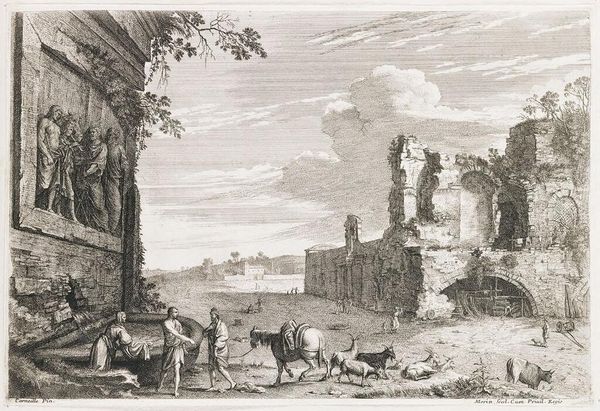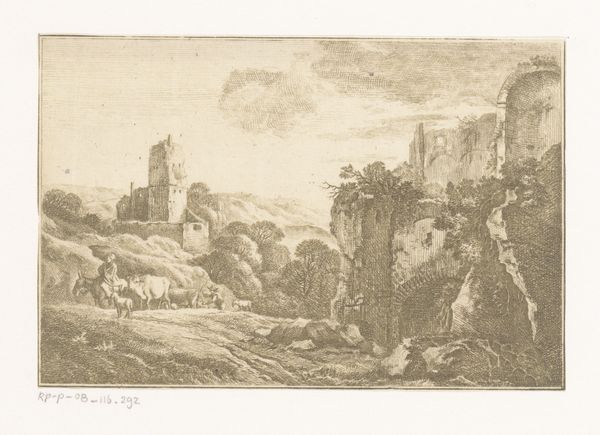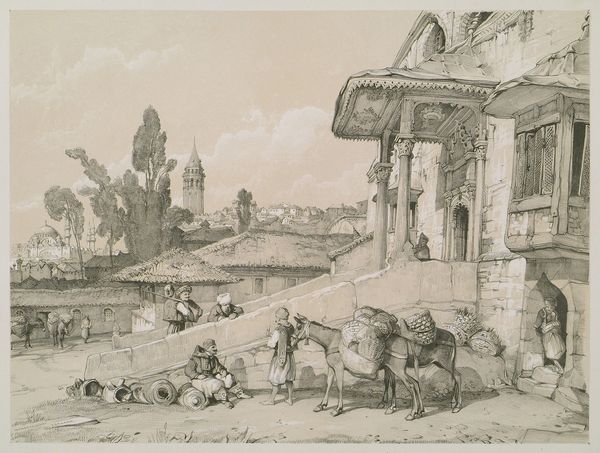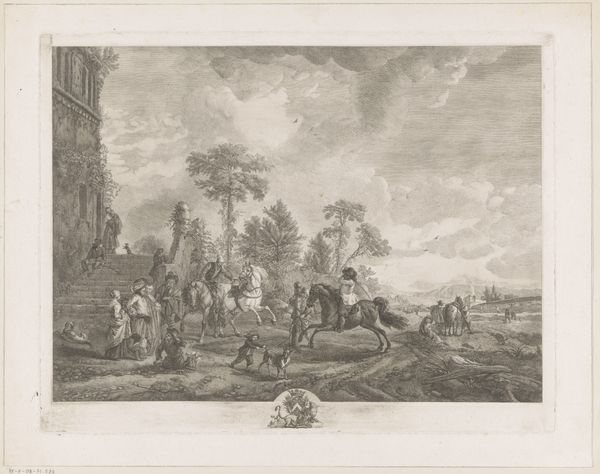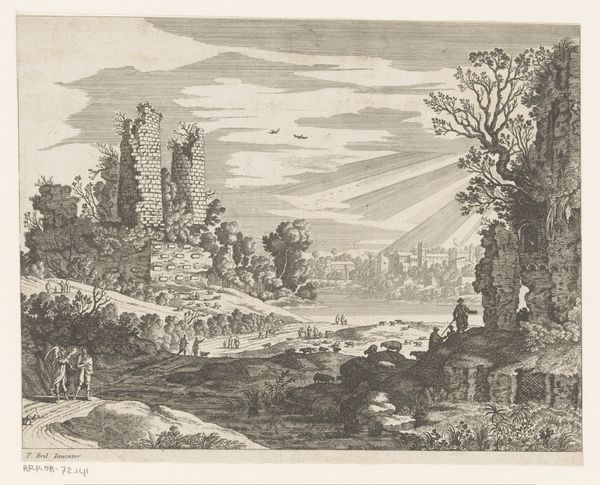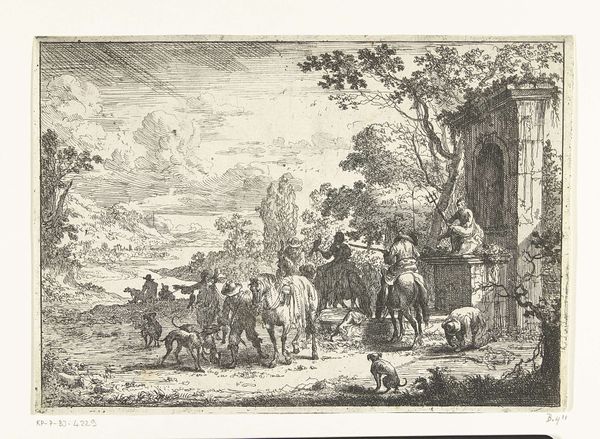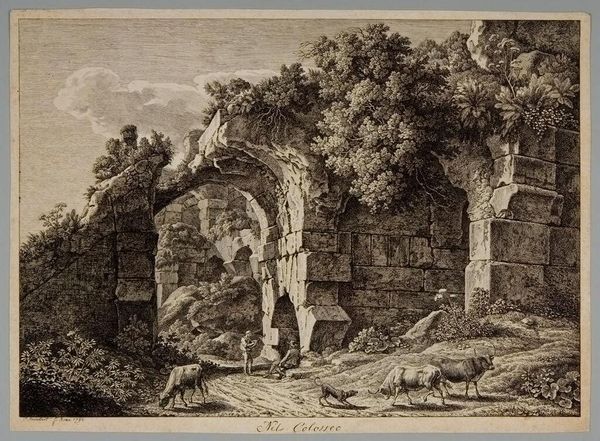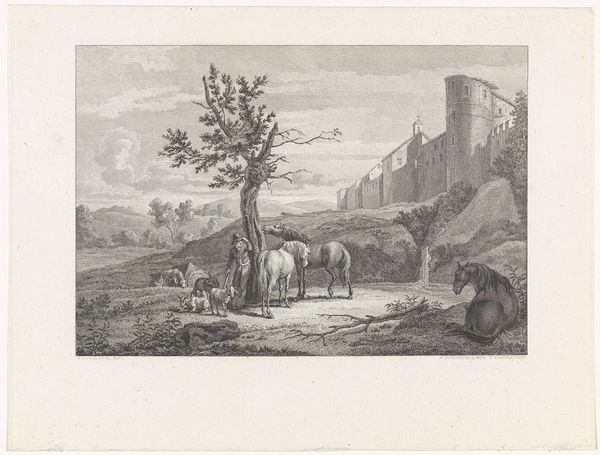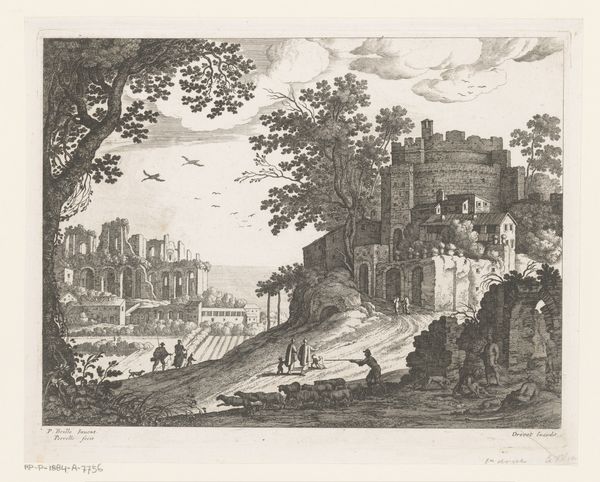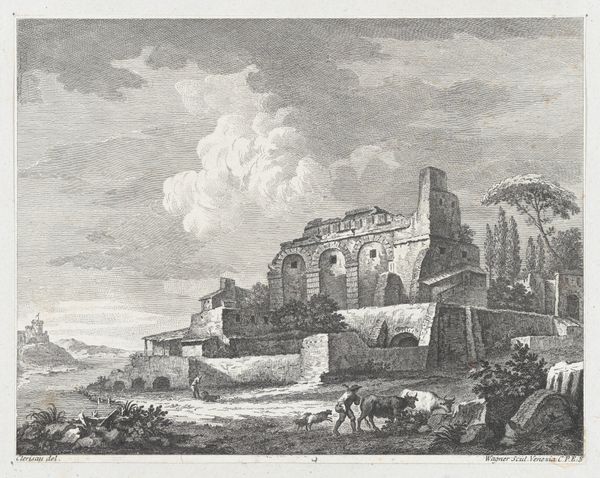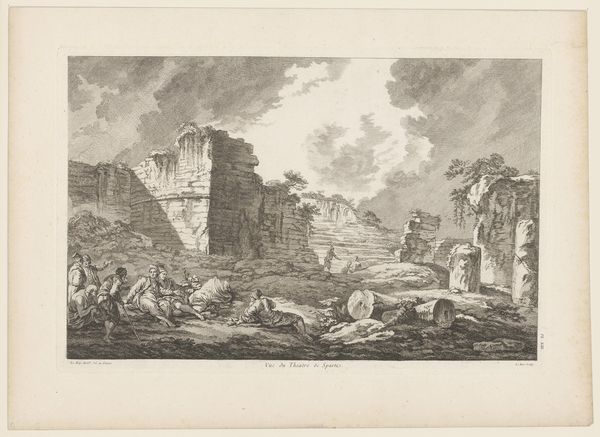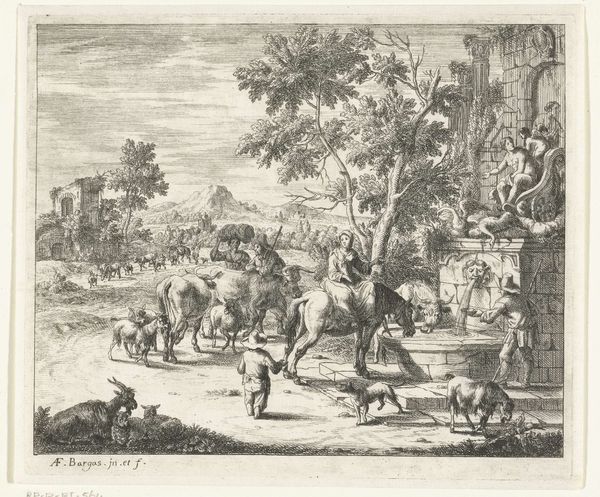
drawing, print, engraving
#
drawing
#
baroque
#
animal
# print
#
pen sketch
#
pencil sketch
#
landscape
#
classical-realism
#
romanesque
#
history-painting
#
engraving
Dimensions: sheet: 11 5/8 x 17 13/16 in. (29.5 x 45.3 cm) image: 8 5/16 x 12 3/8 in. (21.1 x 31.5 cm)
Copyright: Public Domain
Editor: So, here we have "Les Monuments Romains," dating from between 1605 and 1650, by Jean Morin. It's a print, an engraving actually, showing Roman ruins. It feels like a scene frozen in time, this mix of crumbling grandeur and everyday life, very picturesque. How do you read this piece? Curator: From a materialist perspective, it's crucial to consider the printmaking process itself. Engraving, with its demanding labor, allows for the widespread dissemination of images. Consider the economics here; prints made art accessible, breaking down the elite consumption of singular paintings. Editor: That's interesting. It was more about distribution than, say, self-expression? Curator: Not exclusively, but heavily weighted. Look closely at the composition; the meticulous detail achievable through engraving celebrates not just the ruins but also the artisan’s skill. Think about the materials themselves—the copper plate, the inks, the paper—each with its own history and contribution to the final image. This landscape, then, is a commodity. What might that commodity represent? Editor: Maybe a romantic view of a bygone era sold to those who couldn't experience it firsthand? Curator: Precisely. The print’s materiality connects directly to its social function. These Roman monuments, depicted in reproducible form, become symbols of power and cultural capital distributed amongst a wider audience. Even the livestock in the scene have an economic context. Consider how agricultural activities literally built this historical world, and how they built *this* image of it, through exchange. Editor: So, it’s not just about what the image shows, but *how* it was made, and *who* it was for. I hadn’t considered it that way. Curator: Exactly. By examining the materiality and production, we gain a deeper understanding of its cultural significance. Editor: I will definitely think differently about engravings now! It highlights the connection between labor, materials and distribution.
Comments
No comments
Be the first to comment and join the conversation on the ultimate creative platform.
